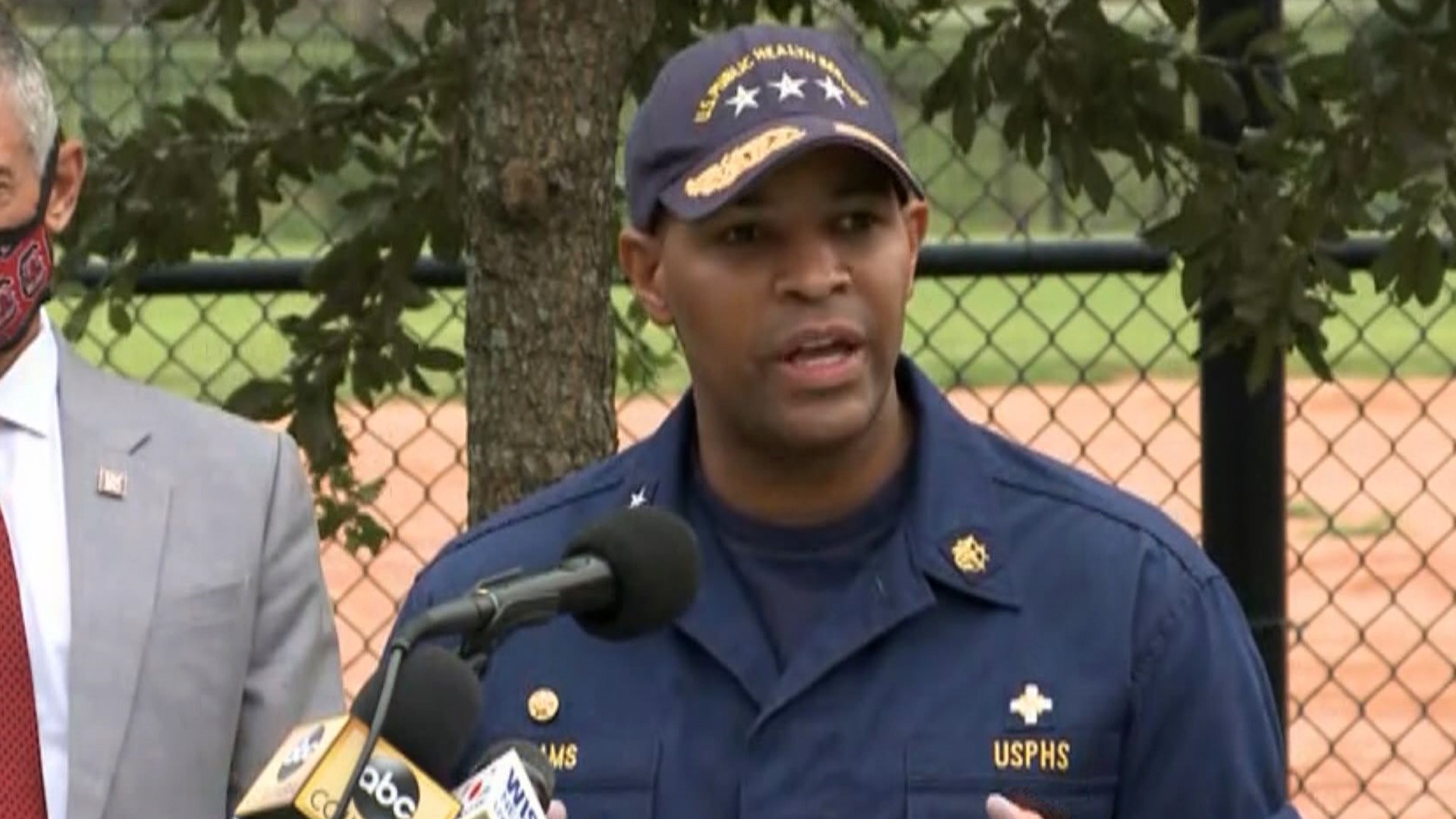COLUMBIA, S.C. — Federal and state leaders held a press conference Saturday afternoon as surge coronavirus testing began in Columbia.
The United States Surgeon General Vice Admiral Jerome M. Adams, joined by Gov. Henry McMaster, the S.C. Department of Health and Environmental Control (DHEC), City of Columbia, and University of South Carolina (UofSC) discussed an expansive COVID-19 community testing initiative that began this weekend.
The press conference held by federal and state leaders was at 1 p.m. on September 19. It was held at Martin Luther King Jr. Park, one of the testing locations.
Starting now, free testing for COVID-19 will be available at Founders Park and Martin Luther King Jr. Park in Columbia. The testing will be through a self-administered nasal swab.
The community testing events will be offered for up to 14 days, according to the release. All testing costs will be covered by HHS. The events will be held at the following locations:
Founders Park (UofSC Baseball Stadium) at 431 Williams St., Columbia (drive-through and walk-up)
- Saturday, Sept. 19 from 11 a.m. to 3 p.m.
- Monday, Sept. 21-Friday, Sept. 25 from 9 a.m. to 4 p.m.
- Sunday, Sept. 27-Saturday, Oct. 3 from 9 a.m. to 4 p.m.
Martin Luther King Jr. Park at 2300 Greene St., Columbia (walk-up testing only)
- Saturday, Sept. 19 from 11 a.m. to 3 p.m.
- Monday, Sept. 21-Saturday, Oct. 3 from 9 a.m. to 4 p.m.
To register to get tested, click here. Once registered, patients needs to print and bring the test voucher with them the day of testing, according to the release. There will be signage and onsite personnel to help those getting tested. Results will be emailed in as little as three days.
For more information, read our article here.
According to the agencies involved, these testing events are mean to increase federal support to communities where there has been an 'intense level' of new cases. These sites have the ability to conduct up to 5,000 tests a day with the intent to detect cases that would go undetected and could in those middle size metropolitan areas to further help the states to flatten the curve.

